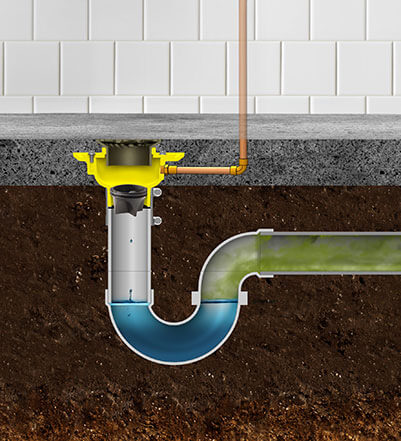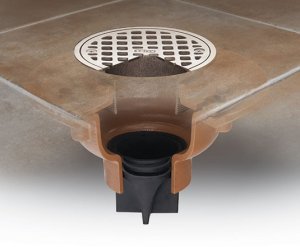
Academic Researchers, Jay R. Smith Mfg. Co. Offer Expert Advice and Solutions
Because of shelter-in-place and stay-at-home orders around the world during the COVID-19 pandemic, many buildings have been sitting empty for months. Those vacancies mean fixtures and drains are being used infrequently, if at all, which could lead to severe problems.
Many of these issues, such as sewer gas emissions and water stagnation problems, are familiar but have never happened on such a large scale. The fact that many buildings have been closed up for months has much more significant implications than just one structure here and there. There is little consensus on how to handle this novel situation.
Researchers Offer Recommendations
Researchers and engineers at Purdue University studied this issue and recently published a report, Considerations for Large Building Water Quality and Extended Stagnation, that can offer a bit of guidance.
Where there is prolonged water stagnation, one issue of particular concern is the growth of Legionella bacteria that can cause disease. Many buildings have experienced problems with stagnation after just hours or days of being closed. The widespread effects of weeks to months of stagnation is unknown.
The presence of other microbes should also be considered. Most cities add a disinfectant to potable water to eliminate the problem. However, those disinfectants’ residual stability dissipates rapidly over time. In fact, the Purdue paper stated that decay occurs at a stagnant tap more than 140 times faster than in the corresponding municipal water. It also pointed out that the rate could be even faster in “green” buildings designed for low water use. Pipes holding stagnant water also experience more corrosion because of the decreased effectiveness of corrosion control over long periods.
The Purdue paper recommended periodic flushing, but even that is not without drawbacks. There are over 5.6 million commercial buildings in the United States. Imagine the stress a dozen or so large buildings could put on municipal water and sewerage departments. Therefore, Purdue researchers recommended drawing up a recommissioning plan and reviewing it with local authorities and health departments.
The safety of workers must also be considered. Flushing can release high concentrations of chemical and microbiological contaminants. The Purdue researchers recommended screening workers for preexisting conditions that may make them particularly vulnerable to contaminants and issuing the proper personal protective equipment to avoid exposure.
Quick Fix for Emissions

Fortunately, sewer gas emissions are easier to address. For this problem, Jay R. Smith Mfg. Co.® has an easy and affordable fix that takes just a minute or two to implement. No special tools are required, and this fix comes with a ten-year warranty. Jay R. Smith Mfg. Co.® is an MCAA major sponsor.
The labor-saving “Stink Stopper” Quad Close® Trap Seal Device automatically closes to minimize evaporation in floor drains and opens to allow water in. The Stink Stopper is made from a chemically resistant elastomer and is available in several sizes guaranteed to fit almost any drain.
You simply pop the Quad Close Trap Seal into the drain’s strainer throat, and sewer gases are sealed off. Installation is usually a one-step process. However, in the current situation, where buildings have been vacant for weeks, priming the floor drain trap with water after installing the device is recommended.
Installing Quad Close Trap Seals is also an excellent preventive measure for buildings that have already opened. No one could have predicted the shutdown of so many buildings, and it is unlikely that anyone can predict what we might face in the future. Taking simple steps now could prevent potential problems.
For more information, visit www.jrsmith.com. MCAA thanks Jay R. Smith Mfg. Co.® for being an MCAA major sponsor.


